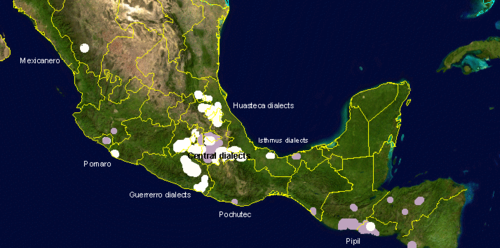New Mexico prison officials claim this Nahuatl note marks the birth of a new gang linked to 30 prisoners in New Mexico State Penitentiary.
They say that Nahuatl, the ancient language of the Aztec empire, is being used by gang-bangers to forge a new Aztec-like order, controlled from within the walls of New Mexico’s prisons.
Gang achautli (bosses) are issuing their secret orders in Nahuatl so that the pitzome (pigs/cops) can’t figure out what they are up to.
Capt. Joe Lytle, of the New Mexico Corrections Department, told Crystal Guyiterrez of KRQE that officers have translated some Nahuatl letters that show inmates are still trying to call the shots for criminal activity over the wall.
“I have a whole book on it, from one particular inmate that we have, describing different hits, different drug activity,” Lytle said. “It is a public safety issue all around.”
I can’t help but wonder at the relationship between Aztec human sacrifice and the narcotraficante penchant for public displays of mass murder. (Horrible image of latest atrocity here.)
Lytle said the inmates learn the language from other more experienced inmates. Since the officers have been studying Nahuatl too, prisoners have been mixing in more slang in a linguistic arms race to keep prison bulls in the dark.
Outside of prison, Nahuatl is still spoken by around 1.5 million law-abiding citizens, making it the most commonly used among the 68 Indian languages still spoken south of the border. Speakers are mostly poor peasants of Indian extraction, and dialects, some mutually unintelligible, abound. Currently about 1.5% of Mexicans can speak Nahuatl, down from 5% in 1895. Despite the number of speakers, many fear that the language will die soon, due to migration and the low prestige of a language once spoken in glittering courts but now the language of the disenfranchised in a country where Spanish and English offer far better prospects.
This is the same fate faced by most Native American languages, but what makes Nahuatl unique is its great literary history. After the Spanish conquest of the Aztecs, Nahuatl was still the dominant regional language in Mexico, and the Spanish found it easier to administer their conquests in the local language rather than to force millions of Indians to learn Spanish, at least at first. So the glyphs used by Aztec priest were replaced by the Latin script of Spanish monks, and older literature was transcribed as Nahuatl literacy spread. In 1570, Nahuatl was made an official language of the empire, and become the lingua franca of the Viceroyalty of New Spain. But Nahuatl’s second wind ended in 1695, when all languages but Spanish were banned by order of the king. Repression of Nahuatl continued up until 1990, when the Mexican government reversed gears and declared Nahuatl a national language once more, giving indigenous people the right to use their native language in all spheres of public and private life. But economic and cultural pressures are stronger than ever, and a second renaissance seems unlikely.
Nahuatl’s adoption by prisoners represents its shift from “language of power” to “language of solidarity,” which is a topic I will be exploring in future “Language Lost and Found” posts.

